1
Charles-Alfred Roy, known as Desjardins (1846-1934)1885-1905
Saint-André de Kamouraska (Québec), Canada
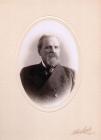 Credits:
Credits:The Collection of the Musée régional de Kamouraska
The Desjardins Family Private Collection
Photographer: Ulric Lavoie, Rivière-du-Loup
N.A.C. P2005.41
2
The writing of history is a work in progress made up of the daily activities of people everywhere. However, looking back over the actions that fashioned our world, certain people stand out because their presence influenced the lives of so many others. A case in point is that of Charles-Alfred Roy, known as Desjardins, whose life is an integral part of the history of Saint-André de Kamouraska, a village in which he was deeply involved in the years around the time of Confederation.3
Steam engine1920-1940
Unknown
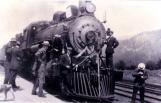 Credits:
Credits:The Collection of the Musée régional de Kamouraska
The Lemesurier-Caddell Private Collection
Photographer: Unknown
N.A.C. P1994.584
4
In the middle of the 19th century, the old seigniorial lands along the Saint Lawrence River are overpopulated. As a result, a good number of families, as well as many young adults leave the region hoping to better themselves. Many will choose to go work in the land of our American neighbours where the cotton mills of the northeast have a pressing need of labour. Quite a few of them will take the train, the new means of transportation now available to them in the historical region of the Côte-du-Sud (south shore).5
At the station of Saint-André de Kamouraska (2)Around 1925
Saint-André de Kamouraska (Québec), Canada
 Credits:
Credits:The Collection of the Musée régional de Kamouraska
The Desjardins Family Private Collection
Photographer: Éva Roy, known as Desjardins
N.A.C. P.2006.282
6
Agrarian and Parish history of the Côte-du-Sud1961 (1982)
Québec (Québec), Canada
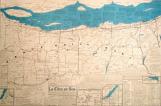 Credits:
Credits:The Archives de la Côte-du-Sud et du Collège de Sainte-Anne
Compilation and design : Adrien Caron, priest
7
The region of the Côte-du-Sud, with its many seigniories granted during French rule, is greatly affected by these migratory movements. Populated since the end of the 17th century, it stretches along the south shore of the Saint Lawrence downriver from the Seigniory of Lauzon as far as Kamouraska. Up until the beginning of the 19th century, it has an important demographic weight in the territory of Québec. The emigration of part of its population caused by the saturation of its territory will bring about a decrease in this demographic weight in proportion to the whole of the actual province of Québec.8
The exterior of the church Saint-Louis-de-KamouraskaAround 1910
Kamouraska (Québec), Canada
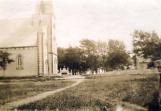 Credits:
Credits:The Collection of the Musée régional de Kamouraska
The René Chaloult Family Private Collection
Photographer: Unknown
N.A.C. P1977.3753
9
The Seigniory of Kamouraska is one of the hardest hit. Granted by Louis Buade de Frontenac in 1674, its colonization only begins about twenty years later. The parish of Saint-Louis de Kamouraska is created in 1714. The 19th century church is built in 1792, in the heart of the village.10
The interior of the church of Saint-Louis-de-KamouraskaAround 1910
Kamouraska (Québec), Canada
 Credits:
Credits:The Collection of the Musée régional de Kamouraska
The René Chaloult Family Private Collection
Photographer: Unknown
N.A.C. P1977.3531
11
Father Nicolas-Tolentin Hébert (1810-1888)1860-1880
Kamouraska (Québec), Canada
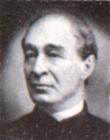 Credits:
Credits:The Collection of the Musée régional de Kamouraska
Photographer: Unknown
N.A.C. 1977.2866 (detail)
12
To counter the migratory movement towards the Unites States, the French-Canadian elite, with the clergy in the forefront, tries to generate interest in and create momentum for the colonization of new Québec territories. In Kamouraska county, the Society of L'Islet and Kamouraska for the colonization of the Saguenay will be launched in 1848. Father Nicolas-Tolentin Hébert (parish priest of Saint-Pascal de Kamouraska from 1836-1848, then of Kamouraska from 1848-1884) is the president of this society. This movement will be particularly involved in the creation of the municipalities of Hébertville and Métabetchouan.13
Édouard Quertier (1796-1872)1850-1870
Saint-Denis-De La Bouteillerie (Québec), Canada
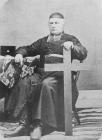 Credits:
Credits:The Archives de la Côte-du-Sud et du Collège de Sainte-Anne
Photographer: Unknown
00361
The Collection of the Musée régional de Kamouraska